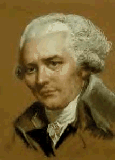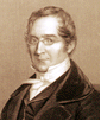Though peacefully prosperous during most of the intervening years, the Meudon site was subject to damaging military occupation at both the beginning and the end of the constitutionally unsettled period from the foundation of the turbulent First Republic in the aftermath of the 1789 Revolution to the restoration of stability with the establishment of the Third Republic in 1871. The Chateau Vieux was « accidentally » destroyed in 1795, during first wave of occupation, by revolutionary army forces commanded by the recently promoted Colonel Laclos, previously known (and still remembered) for his

daring authorship, as a young officer under the Ancien Regime, of Liaisons dangereuses. A relatively uneventful period of routine repare and maintenance for use by the imperial or royal authorities in the long period from the reign of Napoleon I to that of Napoleon III, was followed by another military occupation at the period of the Paris Commune - this time by Bavarian units of Bismark’s besieging army - of which the outcome was the destruction of the upper part (but not the foundations) of the Chateau Neuf.
It was in the pre-brumaire years (1792-1799) of the First Republic that Meudon’s future vocation as a centre of what is now called aerospace research and developent was precociously manifested, when it was designated by the government as the site for the development of advanced

technology for military applications. It was not as a literary celebrity but as a leading expert in the technology of explosive projectiles (for use both on land and at sea) that Choderlos de Laclos was chosen to command the establishment that was set up for the purpose of producing such (evidently dangerous) munitions in the (thereby doomed) Chateau Vieux.
However what has retained the attention of later aerospace historians is not what happened in the Chateau Vieux, but the hardly less dangerous work

undertaken at the same time in the Chateau Neuf, under the

direction of Captains Nicolas Conté (a chemist) and Jean Coutelle (a physicist) both former students of Dr Charles, the inventor of the hydrogen balloon that had prompted the warning to Franklin that flying would be be used for war. The fulfilment of that prophecy was the task for which Conté and Coutelle were sent to Meudon. The outcome (in which the Chateau Neuf survived but Conté lost an eye) was the construction of the first batch of usefully operational balloons, namely Entreprenant, Céleste, Hercule, and finally (for Bonaparte’s Egyptian expedition) Intrépide.
Piloted by aeronaut Coutelle himself, the Entreprenant successfully carried out several successful battlefield surveillance missions on the Northern front in 1794. Despite these positive results (but after a more disappointing performance in Egypt, where much of the equipment was destroyed by Nelson) Bonaparte’s Consular government deemed that the Meudon air force was insufficiently cost effective, and it was therefore disbanded. This rather ignominious dismissal from military service, and the ensuing liberation from Coutelle’s tether, made it possible at last for the Entreprenant to show what it could do. When its new owner, the free entrepreneur Etienne Robertson,

claimed to have reached the amazing hight of 7 Km in 1803, the government was goaded to bring the Enterprenant back into public service for scientific purposes. After reconditionning by Conté, the veteran aerostat was confided in 1804 to the physicists Jean-Baptiste Biot (specialist in magnetism) and Louis-Joseph Gay-Lussac. With Biot as ballast the ceiling was reached at the relatively modest hight of 4 Km, but finally - voyaging alone with minimal equipment - Gay-Lussac did indeed reach the 7 Km target altitude, this time under scientifically controled conditions. The Meudon balloon thus established a record that stood unchallenged for half a century.
From the beginning of the empire of Napoleon I to the end of that of Napoleon III, the Meudon campus reverted to its less exciting earlier role as a royal palace of secondary importance, while the development of flight proceeded elsewhere with only limited success : though useful for scientific exploration of the atmosphere, the aerostats were found to be more trouble

that they were worth for either military or commercial purposes. Their weakness was what might be desribed as the Flying Dutchman problem, with reference to the opera that was one of the most noteworthy creations of this otherwise relatively unremarkable period of Meudon history. This first major work by the subsequently controversial musician Richard Wagner was written in what is now the Avenue de l’Observatoire, where its composer was a temporarily bankrupt refugee from Saxony (so literally a fleeing Deutsch man) in 1841.
An allegorical expression of the plight of wind-drifting flyers in those pioneering days was provided in Act 1, by the plaintive song of the Flying Dutchman, whose words were « Unmoglich duncht mich, dass ich’s nenne die Lander alle, die ich fand : das eine nur, nach dem ich brenne, ich find’es nicht mein, mein Heimatland ! » which roughly means I have found plenty of other places, but what I still seek is the way to get home ! The solution to the problem was prophetically proposed at the beginning of Act 2, where it was suggested that the way to bring the flyer home would be to use a spinning wheel to drive the wind : in the words of the accompanying audioclip « ... gutes Radchen, braus und suaus ! Ach ! gabst du Wind, er kam geshwind. Spinnt ! Spinnt ! ... »

Forty years later, when the musical wizard was nearing the end of his provocative life - but barely a mile from where these imaginative words were written - Meudon’s Etang de Chalais was chosen for the first serious program of construction of the necessary spinning wheel machinery - whose essential element was of course a screw propellor.



